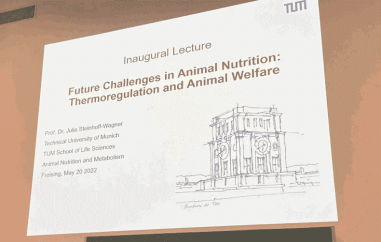Licence to die?
The first time on an airplane is one of those experiences that leave a stamp on your memory. My first plane trip was about 20 years ago, and I would have great recollections of that flight if not only for what happened after the 'no smoking' lights went out. Shortly after the 'ding', a cloud of cigarette smoke filled the air cabin. For hours on end, I was crammed with over hundred other people in a small, enclosed space breathing recycled smoke-infested air. Not a pleasant memory.
As appalling as this may seem today, smoking on airplanes was only banned by most airlines in the late 1990s. Since then, smoke-free laws have been gradually introduced by many countries in public transportation, hospitals and workplaces, and more recently, in indoor public spaces such as bars and restaurants.
Smoking kills up to half of its users. This is the grim reality that slaps you in the face when you read the tobacco fact sheet of the World Heath Organization (WHO). A staggering amount of scientific evidence accumulated over the past 50 years shows that smoking causes several types of cancer, cardio-vascular and respiratory diseases. Nevertheless, smoking kills over 5 million people every year and the death toll continues to rise, especially in low and middle-income countries.
To tackle this global tobacco epidemic, the WHO established the Framework Convention on Tobacco Control in 2005. More than 170 countries have joined this treaty and agreed to put into practice a set of public health policies to protect people from second-hand smoking, to combat tobacco illegal trade and to encourage smokers to quit.
Do tobacco control policies work?
Brazil is one of the pioneer countries in implementing such policies for tobacco control. In 1990, Brazil introduced the first rises in cigarette taxes, which doubled cigarette prices in just ten years. This and other subsequent anti-smoking policies such as smoking bans on public spaces and tobacco marketing restrictions for instance, led to a remarkable drop in smoking rates from 35% in 1989 to nearly half in 2008. But it wasn't known which policies were responsible for this steep decline in the number of smokers.
In a new study published in PLoS Medicine, David Levy from Georgetown University used a computational model to answer this question. Levy found that as much as half of the reduction in smoking rates was due to cigarette price increases alone, while smoking bans and marketing controls each accounted for a 14% drop, and other policies contributed slightly less. The raw numbers are even more impressive: the model estimates that anti-smoking policies saved over 400 thousand lives over the past 20 years in Brazil, and the prediction is that by 2050 almost 7 million more lives will be saved.
Brazil's success story tells us that anti-smoking measures can work even in low to middle-income countries, where smoking is more prevalent. However, Levy's model estimates that an additional 1.3 million deaths could be prevented by 2050 if stricter policies were introduced. So are tougher anti-smoking policies needed to eradicate smoking all together? The answer might be found on the other side of the globe.
A licence to smoke
Australia is a country strongly engaged in reducing smoking and protecting second-hand smokers. In the past 30 years since the first anti-smoking policies were implemented, the number of smokers in Australia has dropped from 34% of the population to 15% in 2010. Last week the Australian government introduced a complete ban on tobacco company logos and coloured cigarette packets, which now have a uniform greyish colour and display health warnings and gruesome images of people with smoking-related diseases (the company name is in small print at the bottom of the packet). Plain packaging might represent the beginning of the end of the smoking industry in Australia, but tobacco control activists think more can be done.
"We are the first nation to introduce plain packaging, we have the largest per capita spend on hard-hitting campaigns, some of the most expensive cigarettes in the world, but still 14% of adults smoke and it continues to kill more people, by far, than any other cause of death" says Simon Chapman, an expert in Public Health and Tobacco Control at the University of Sydney "We don't give up at 14%".
Chapman recently proposed the controversial idea of a 'smoking licence' that would limit the access to tobacco products. He believes it is unacceptable that even though tobacco threatens both personal and public health, it can be sold anywhere and to anyone with hardly any controls. The smoker's licence would be accepted only in licensed retailers and have a set limit of cigarettes per day (the higher the limit, the more you pay). The idea is that because the access to tobacco products would be limited, young people would be put off from smoking and adult users would be encouraged to quit.
Jeff Collin from the Global Public Health Unit at the University of Edinburgh is against the smoker's licence:
"I think it's very unlikely that such a proposal would receive necessary levels of support for it to be politically feasible, and it could jeopardise wider support for other tobacco control measures, critically including the active support of many smokers" he says.
Collins thinks the smoker's licence would stigmatize smokers and "shift attention away from the tobacco industry", which he believes is the driving source of the tobacco epidemic. He agrees that it is an "historical absurdity" that tobacco products are so easily accessible and not subjected to any purchasing control, but he suggests that other ways of limiting availability should be tested, rather than targeting the smokers. Collins says "Marketing control is already generally strong in Europe, but plain packaging would constitute a massive step forward. Beyond that (...) there is a need for blue skies thinking".
Second-hand smoking: the invisible killer
But are ideas like the smoker's licence that radical when we consider the health consequences of smoking not only for smokers, but non-smokers as well? Over half a million non-smokers die every year from exposure to second-hand smoke. Smoking bans in public spaces were designed to protect passive smokers but measures like this might not be enough. A survey done in 2006 by the Australian Institute of Health and Welfare revealed that smokers are less likely to agree that second-hand smoking causes health problems, even though it is well-established that second-hand smoking causes heart disease and lung cancer in non-smoking adults, and respiratory diseases in children. This unawareness of the dangers of second-hand smoking puts non-smokers at risk, children in particular.
A study published in the December issue of Pediatrics on 795 smoking parents reports that although most parents restrain from smoking in the house, about 70% smoke in the car, and nearly half of these smoke in the car when their children are present. Research shows that the air quality inside a car when someone is smoking with a window opened is similar to that of a smoky bar. A few countries like Australia, South Africa and Canada have recognised this problem and started implementing laws interdicting smoking in vehicles carrying children specifically to protect children from second-hand smoking, but in most countries this problem seems largely ignored.
The beginning of the end?
Tobacco continues to kill millions around the world but it is not all bad news. Most new cars don't have ashtrays or cigarette lighters, and crystal ashtrays are no longer a traditional item in wedding lists. These are signs that smoking is no longer a glamorous or ordinary affair, and at least in developed countries, these cultural changes are here to stay.
And there is more good news. Recent research shows that the health benefits of quitting smoking are even greater than previously thought. For instance, a new study led by researchers at Oxford University on over 1.2 million women shows that women who stop smoking before middle age live up to 10 years longer than those who continue smoking. And even those who stop smoking later in their lives have about 50-70% less risk of developing smoking-related diseases and dying prematurely, and these results confirm previous studies performed in men.
The first smoking bans on airplanes 15 years ago caused public uproar. About ten years later, the introduction of smoke-free laws in indoor public spaces also caused intense public debate. Perhaps society is not ready for a smoker's licence yet, but maybe in a decade or two, just as we now deem smoking on airplanes absurd, we will condemn how purchasing and consuming tobacco products was once as easy as breathing air.



































